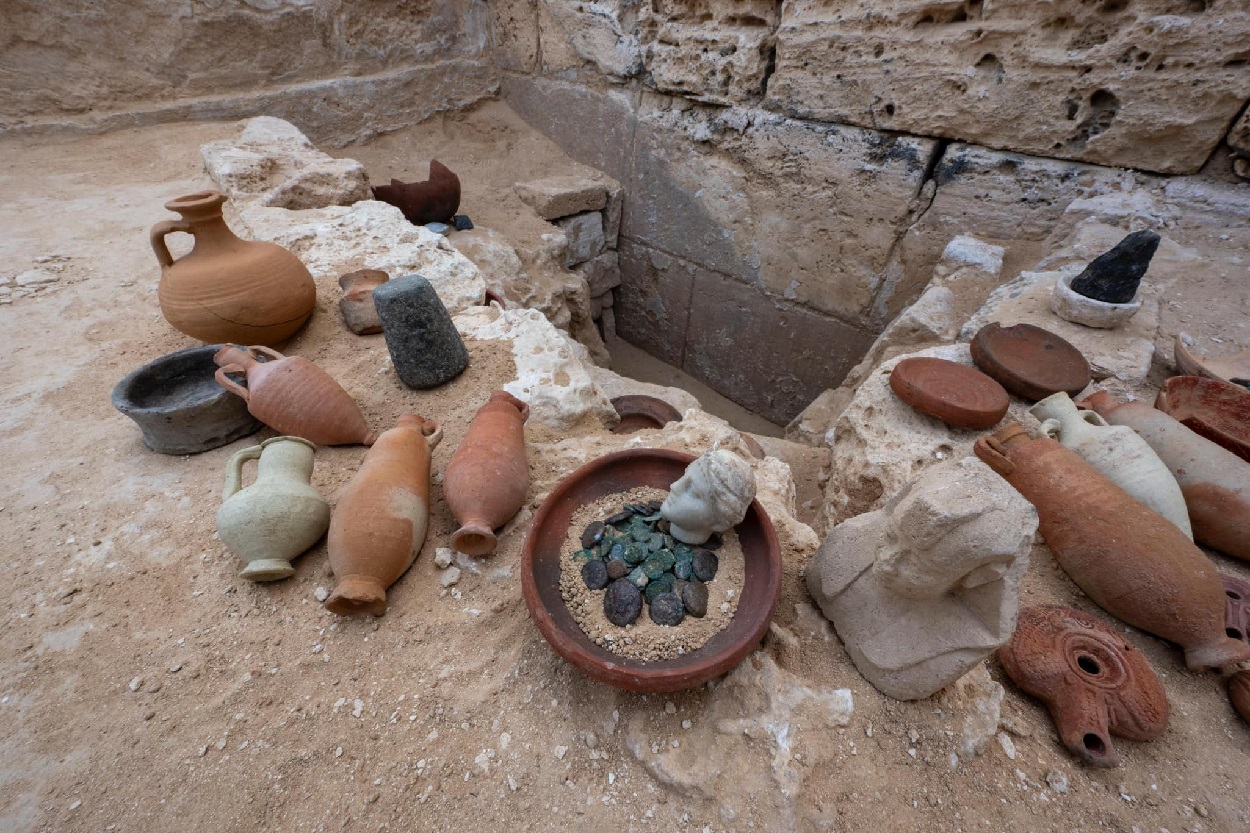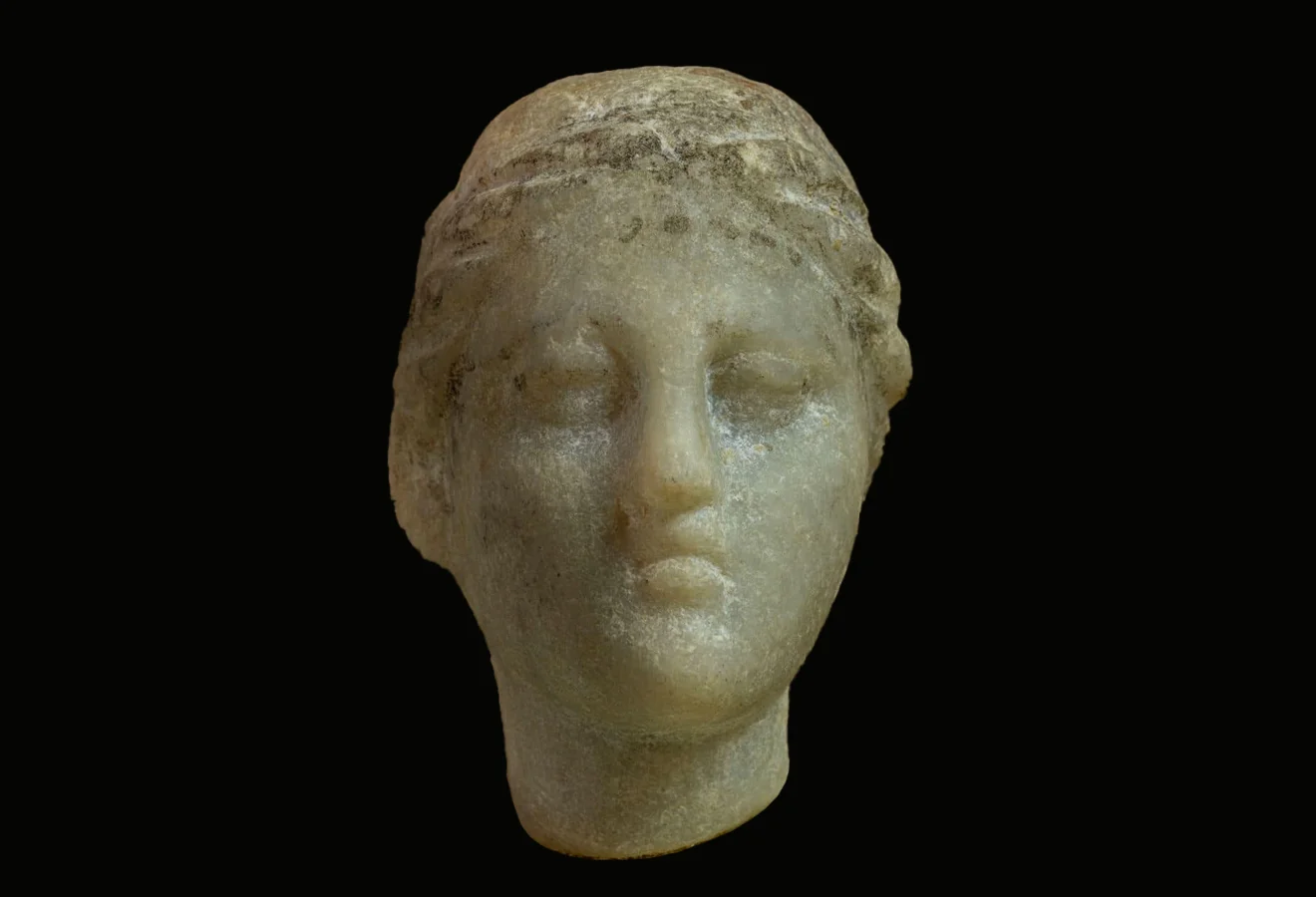Archaeologists excavating at Taposiris Magna near Alexandria, Egypt, have uncovered a marble statue that may depict Cleopatra VII.
Taposiris Magna, meaning “”great tomb of Osiris”, was founded by Ptolemy II Philadelphus between 280 and 270 BC during the Hellenistic period. Taposiris Magna was planned with a square shaped enclosure centred on the Temple of Osiris, which some academics speculate to be the final resting place of Cleopatra VII.
A recent Egyptian-Dominican archaeological mission has conducted excavations within the temple’s southern wall enclosure, uncovering a trove of artefacts from the late Ptolemaic period.
The finds include a white marble statue of a woman wearing a royal crown, that experts believe is a representation of Cleopatra VII, in addition to a limestone bust of a king wearing a nemes headdress.
According to a press statement issued by the Egyptian Ministry of Tourism and Antiquities, archaeologists found coins, ceramics, oil lamps, limestone vessels, bronze figurines, and a scarab-shaped amulet inscribed with “Ra’s justice has risen.”

Excavations also revealed traces of a Greek temple from the 4th century BC, which lies near a system of deep tunnels extending from Lake Mariout to the Mediterranean Sea.
A large necropolis with 20 catacombs was also unearthed, along with an underground tomb beneath the ancient lighthouse of Taposiris Magna. The tomb consists of three chambers, one of which contained nine white marble busts and other artefacts.
Adding to the discoveries, preliminary studies of the submerged sections of the city have revealed underwater man-made structures, human remains, and large amounts of pottery.
“The mission will continue its work, aiming to uncover more of the secrets of this ancient temple and its connection to the reign of Queen Cleopatra VII,” said the Egyptian Ministry of Tourism and Antiquities.
Header Image Credit : Ministry of Tourism and Antiquities
Sources : Ministry of Tourism and Antiquities







